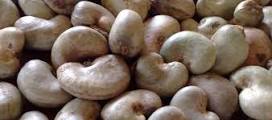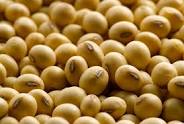Ginger Powder Production and Sales (Local and Export) in Nigeria; The Feasibility Report.

Ginger is well known in many human communities around the world. It is the underground rhizome of a perennial tropical crop called Ginger plant (Zingiberofficinale). Originally, the plant is a native of South Eastern Asia but over centuries has been introduced to various parts of the world like the Caribbean, the Americas and Africa. Presently, the top growers of the crop includes Jamaica, Indonesia, Fiji etc
A mature ginger rhizome is fibrous and has a striated texture. The outer skin of the rhizome is brownish in colour while the inner flesh depending on the variety may be red, yellow or white.
Nigeria is the third largest exporter of ginger in the world after China and India. In the Nigerian market ginger is well known and on high demand even though it is quite expensive.
Most of the dried ginger that are available for international trade are simply sun dried over a few days, but artificial drying is also used in areas lacking a defined dry season to coincide with the harvest.
The rhizomeis dried to between 10 and 12 per cent moisture content. Dried ginger is usually presented in a split or sliced form. Splitting is said to be preferred to slicing, as slicing loses more flavour, but the sliced are easier to grind and this is the predominant form of dried ginger currently in the market.
Nigerian ginger is among the best in the world, with its aroma, pungency and high oil and oleoresin content as distinct features. Ginger production in Nigeria started in 1927.
It is predominantly grown in the northern and middle belt region in Nigeria. Kaduna state is the largest producer of ginger in Nigeria. Other ginger-producingmstates include Nasarawa, Niger, Gombe, Bauchi, Plateau and Benue.
Two (2) major varieties of ginger are grown in Kaduna state, namely yellow ginger (which is more widely grown in Kaduna state), locally known as Tafin Giwa, and black ginger, locally known as Yatsun Biri.
According to sector experts in Nigeria, yellow ginger is highly preferred by the market and it has an expected higher yield per hectare (i.e. about 15 tonnes/ha) than black ginger (11 tonnes/ha).
Every year, Nigeria averages a production volume of over four hundred thousand (400,000) metric tonnes of ginger across the thirty-six (36) states.
In 2017, we had a production volume of about three hundred and forty-nine thousand, eight hundred and ninety-five (349,895) and it was higher in 2016 with five hundred and twenty-two thousand, ninety-six (522,096) metric tonnes. Out of this, ten percent (10%) is locally consumed as fresh ginger while ninety percent (90%) is dried primarily for the export markets.
Globally, Nigeria has the 2nd largest production share of about sixteen percent (16%) after India with a production share of thirty-three point nine percent (33.9%).
In Nigeria, harvesting of ginger starts from October and normally continues until April/May. This largely depends on the market situation as ginger can be left on the ground (not harvested) for two (2) years.
Ginger can be processed into a wide variety of products. Many products can be manufactured from ginger like dehydrated ginger, ginger candy, ginger powder, ginger oil and oleoresins and so on. Ginger is an important commercial crop with versatile applications.
Ginger powder is the grounded form of dried ginger roots used as a flavoring agent, garnish, medicine, and food preservative. In addition, it is used to impart fragrance in soaps and cosmetics.
Therefore, ginger powder has wide applications across multiple industries, including food processing, pharmaceuticals, beverages, personal care & cosmetics, and others.
Owing to the distinct taste and health benefits of ginger powder, it is extensively used in the food & beverage industry to manufacture products such as tomato ketchup, pickles, meat sausages, and salad dressings. Furthermore, it offers antioxidant properties, and is thus used in several digestive drinks, such as ginger tea.
These health benefits offered by ginger powder fuel its demand among health-consciousness consumers, which acts as a key driver of the global ginger powder market.
Furthermore, rise in consumer preference for natural flavoring and additives in bakery items such as cookies, biscuits, and cakes has boosted the need for natural flavorings such as ginger powder, thereby positively impacting the market growth.
Global Ginger Market is expected to reach US$ 8.46 Billion by the end of the year 2027 from US$ 6.82 Billion in 2020, growing with a compound annual growth rate (CAGR) of three point thirteen percent (3.13%) from 2021 to 2027.
This report is to examine the financial viability or otherwise of establishing a ginger powder production and packaging plant in Nigeria.
The production capacity of the proposed business is five (5) tons for fresh ginger per hour for a single (1) shift of eight (8) hours per day each working at eighty percent (80%) of the installed capacity in the first, second, third, fourth and fifth year of operations respectively.
Table of Contents
EXECUTIVE SUMMARY 1.0 Business Overview 1.1 Description of the Business 1.2 Vision and Mission Statement 1.3 Business Objective 1.4 Value Proposition 1.5 Critical Success Factor of the Business 1.6 Current Status of Business 1.7 Description of the Business Industry 1.8 Contribution to Local and National Economy 2. Marketing Plan 2.1 Description of product 2.2 Product Packaging and delivery 2.3 The Opportunity 2.4 Pricing Strategy 2.5 Target Market 2.6 Distribution and Delivery Strategy 2.7 Promotional Strategy 2.8 Competition 3. Production Plan 3.1 Description of the Location 3.2 Raw Materials 3.3 Production Equipment 3.4 Production Process 3.5 Production Cost 3.6 Stock Control Process 3.7 Pre-Operating activities and expenses 3.7.1 Operating Activities and Expenses 3.8 Project Implementation Schedule 4.0 Organizational and Management Plan 4.1 Ownership of the business 4.2 Profile of the promoters 4.3 Key Management Staff 4.3.2 Management Support Units 4.4 Details of salary schedule 5. Financial Plan 5.1 Financial Assumption 5.2 Start- up Capital Estimation 5.3 Source of Capital 5.4 Security of Loan 5.5 Loan Repayment Plan 5.6 Profit and Loss Account 5.7 Cash Flow Analysis 5.8 Viability Analysis 6.0 Business Risks and SWOT Analysis 6.1 Business Risks 6.2 SWOT Analysis
Project Specification:
Additional Info
Get this Report
Direct bank transfer
To order the report, Please do pay the sum of ₦150,000 into
Account Name : Foraminifera Market Research Ltd
Account Number : 274 20 569 37
Account Name : Foraminifera Market Research Ltd
Account Number : 101 76 603 95
Account Name : Foraminifera Ventures
Account Number : 011 66 066 32
Make your payment directly into our bank account. Please use your Order ID as the payment reference. Your order will not be shipped until the funds have cleared in our account.
Instructions
After payment call us on 01 -29 52 413 / 08033782777 or email us at foraminiferamarketresearch@yahoo.com with the payment details. After payment confirmation, the soft copy of the report would be sent to you within 24 hours.



